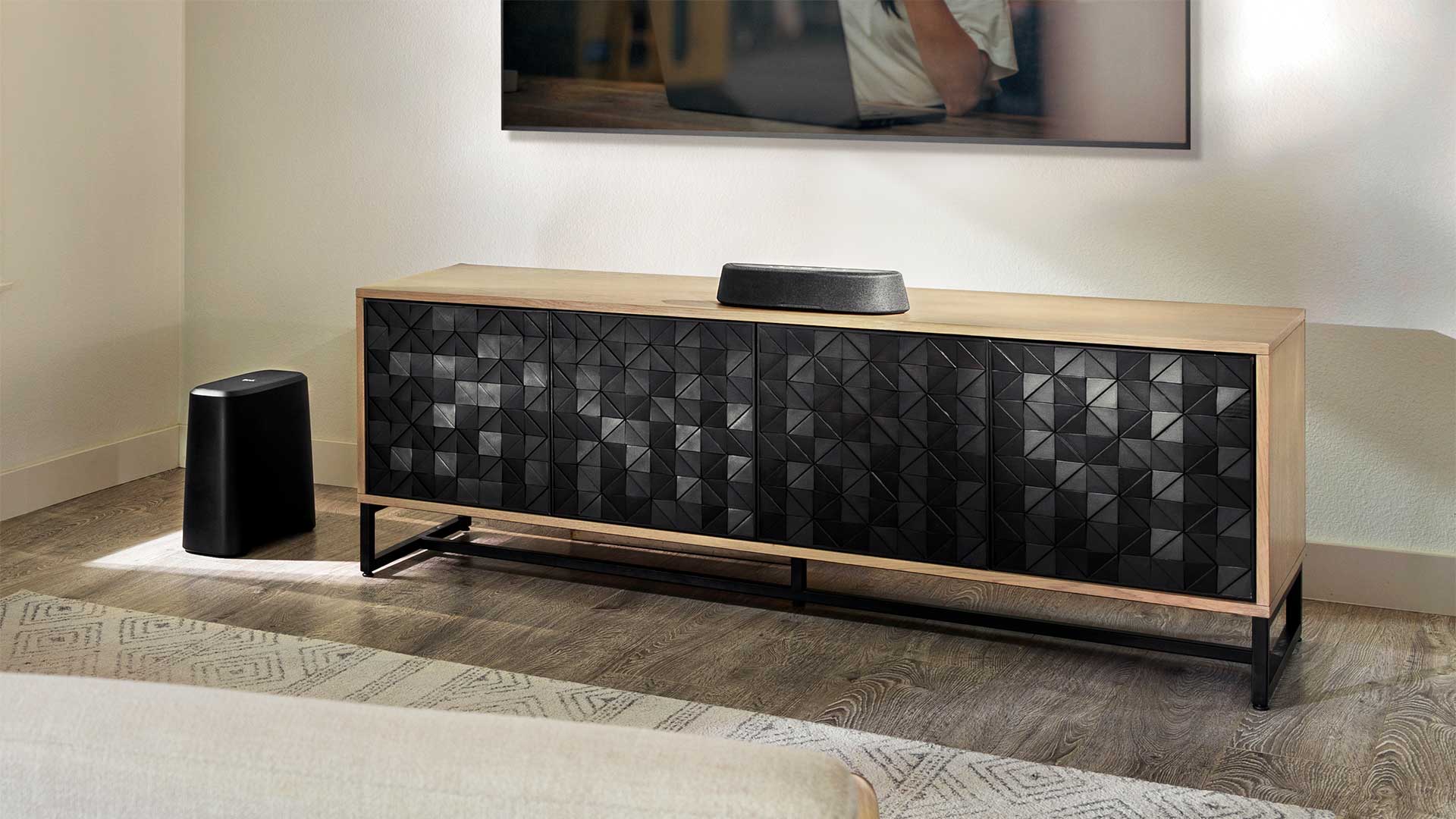Sound+Image Verdict
This well-priced soundbar and subwoofer solution is full of surprises. Its lozenge is physically discreet, yet facilities are impressive, with networked music streaming in addition to Dolby Atmos and DTS:X compatibility, while the system delivers a solid entertainment performance for those seeking a simple solution at this price.
Pros
- +
Dramatically large performance for size & price
- +
Excellent sub integration
- +
Very easy to use
- +
Expansion available
Cons
- -
Unusual looks
- -
Check 80mm height against your TV
Why you can trust What Hi-Fi?

This review originally appeared in Sound+Image magazine, one of What Hi-Fi?’s Australian sister publications. Click here for more information on Sound+Image, including digital editions and details on how you can subscribe.
The MagniFi Mini AX is full of surprises. Polk has delivered a rather different soundbar and subwoofer solution – although it’s hard to call it a bar, really, when it sits like a little humpy at the centre of your TV. A TV speaker? A lozenge, perhaps. So an unusual sound lozenge and subwoofer solution.
The lozenge is remarkably small, just a ruler’s length at 34cm wide; we had thought it larger from pictures we had seen, and had wondered where we might put it to prevent it covering the bottom of our benched TV screen. But no, at 8cm high it was just perfect to fit below a resident 75-inch Samsung. Check that 8cm height against your own screen and you’ll know whether you can accommodate the first ‘Mini’ bit of Polk’s pairing here.
The subwoofer may be regarded as the bit doing the MagniFi-ing. This is much larger, with a large oval driver firing downwards, so that its main acoustic output exits from bottom gaps in the raised sides, while it also ports to the back. This makes it versatile with regard to placement, relatively immune to furniture on either side of it, though you couldn’t easily put it in cabinetry.
So the subwoofer dwarfs the sound lozenge, with its height particularly dominant at 37cm, weighing on the other side of the versatility scale. Once you’ve established the best positional options to gain its maximum bass strength to your listening position (see our guide here), the subwoofer is unlikely to be particularly discreet.
But it’s certainly convenient in terms of set-up, since there are no physical connections except mains power on the subwoofer; it pairs wirelessly and automatically with the lozenge, and all the usual subwoofer settings are baked in.
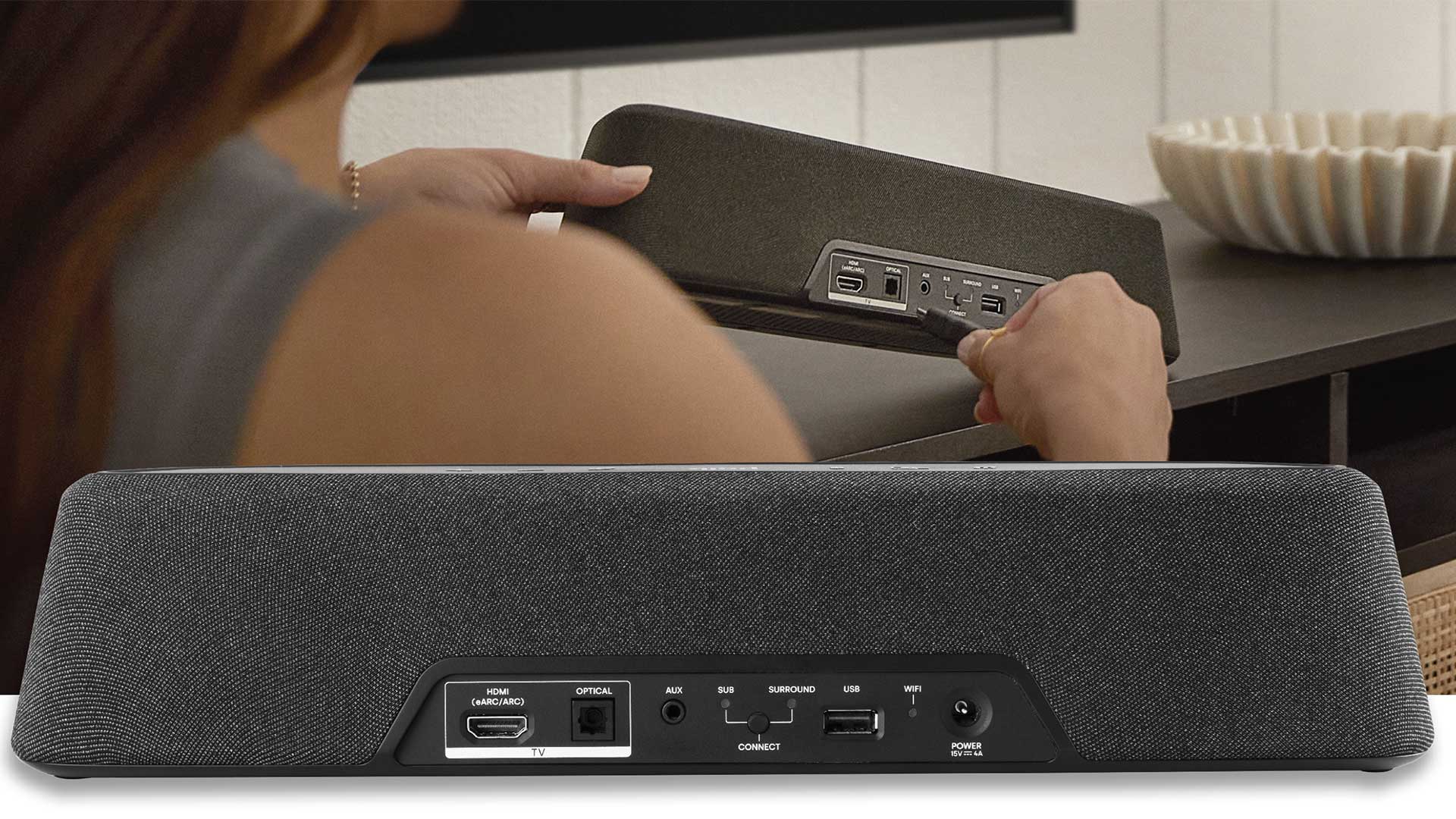
Build & facilities
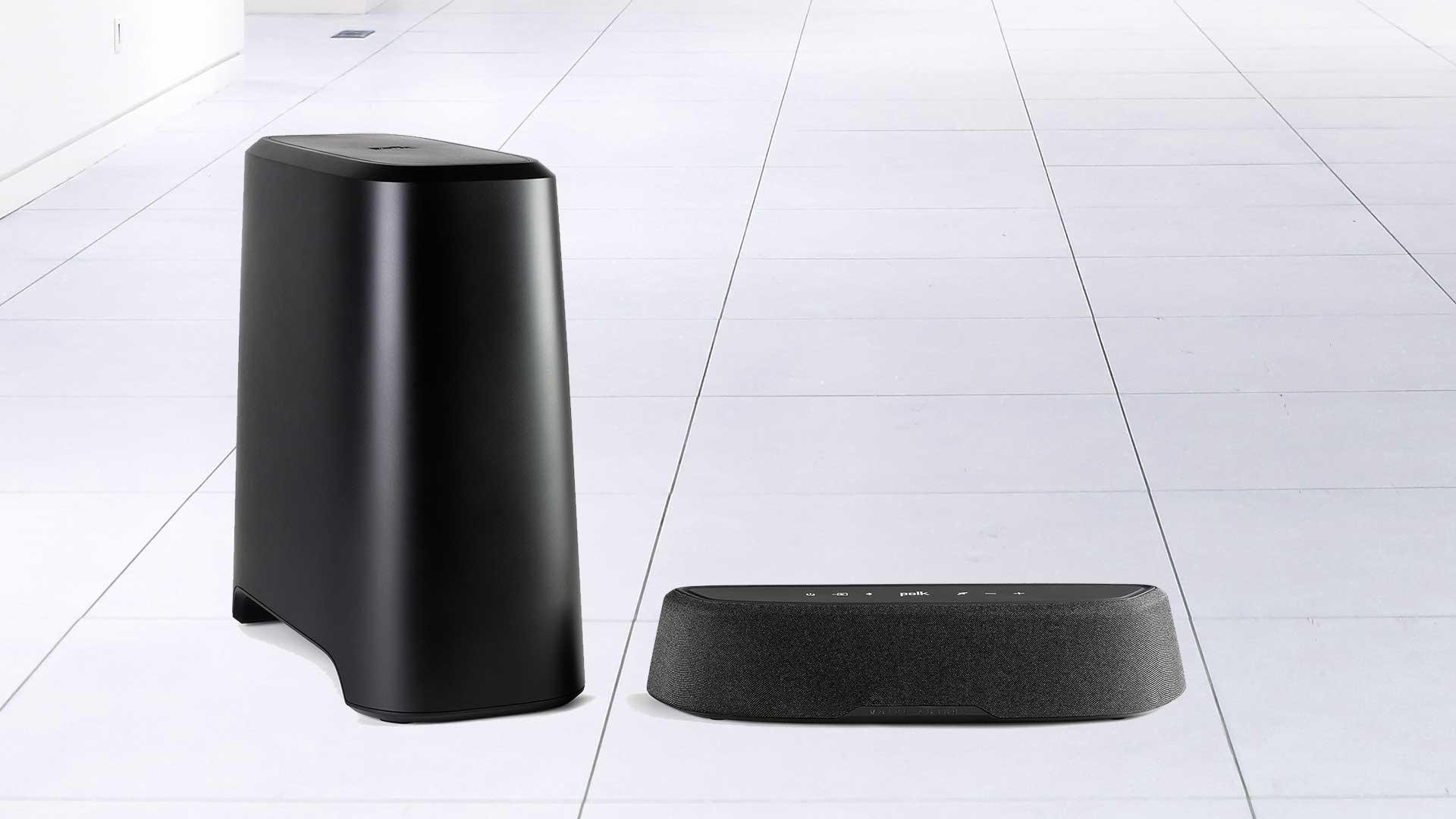
LOZENGE (BAR)
Inputs: HDMI eARC, optical digital, 3.5mm analogue, USB-A (service only), Wi-Fi, Spotify Connect, AirPlay 2, Chromecast, Bluetooth (SBC, AAC)
Drivers: 2 x 19mm tweeter, 3 x 51mm midrange
Dimensions: 366 x 104 × 79mm
Weight: 1.73gm
SUBWOOFER
Subwoofer driver: 127 × 178mm downfiring woofer
Dimensions (wdh): 182 × 396 × 371mm
The lozenge unit offers three physical audio inputs: HDMI with eARC to connect with a similarly-equipped HDMI input on your TV, an optical digital input as a fallback connection for TVs with neither eARC nor ARC, and as a last resort a 3.5mm analogue minijack input. Most people will use just one, but you could in theory have the TV on the HDMI and some analogue source plugged into the minijack.
Besides, there are more ways to play, thanks to the Polk’s Wi-Fi connection. This enables AirPlay 2 and Chromecast streaming, while there’s also Bluetooth, although no indication of any high-quality Bluetooth codecs, so use the Wi-Fi streaming if you’re able.
In addition to the single oval 127 × 178mm (7 × 5 inch) driver in the subwoofer, the lozenge has a slightly unusual set of LCR drivers. The left and right channels each get a 19mm and a 51mm midrange driver, but the centre channel has only the one midrange driver.
The fabric and metal grille wrapping around the body of the lozenge are rather too thick to reveal exactly how these drivers are seated or angled; there are certainly no upward-firing drivers, as the top of the unit has a hard plastic oval with six press buttons for local control. Nor is there anything spreading the sound particularly wide, though the outermost of the L-R drivers may lean in that direction.
Yet the bar is certified for both Dolby Atmos and DTS:X, object-based surround formats, and it also offers a ‘3D Audio Mode’, claiming this “transforms stereo audio to 360-degree surround sound”. All this through just three front channels, five drivers in all, plus the subwoofer. How can this be?
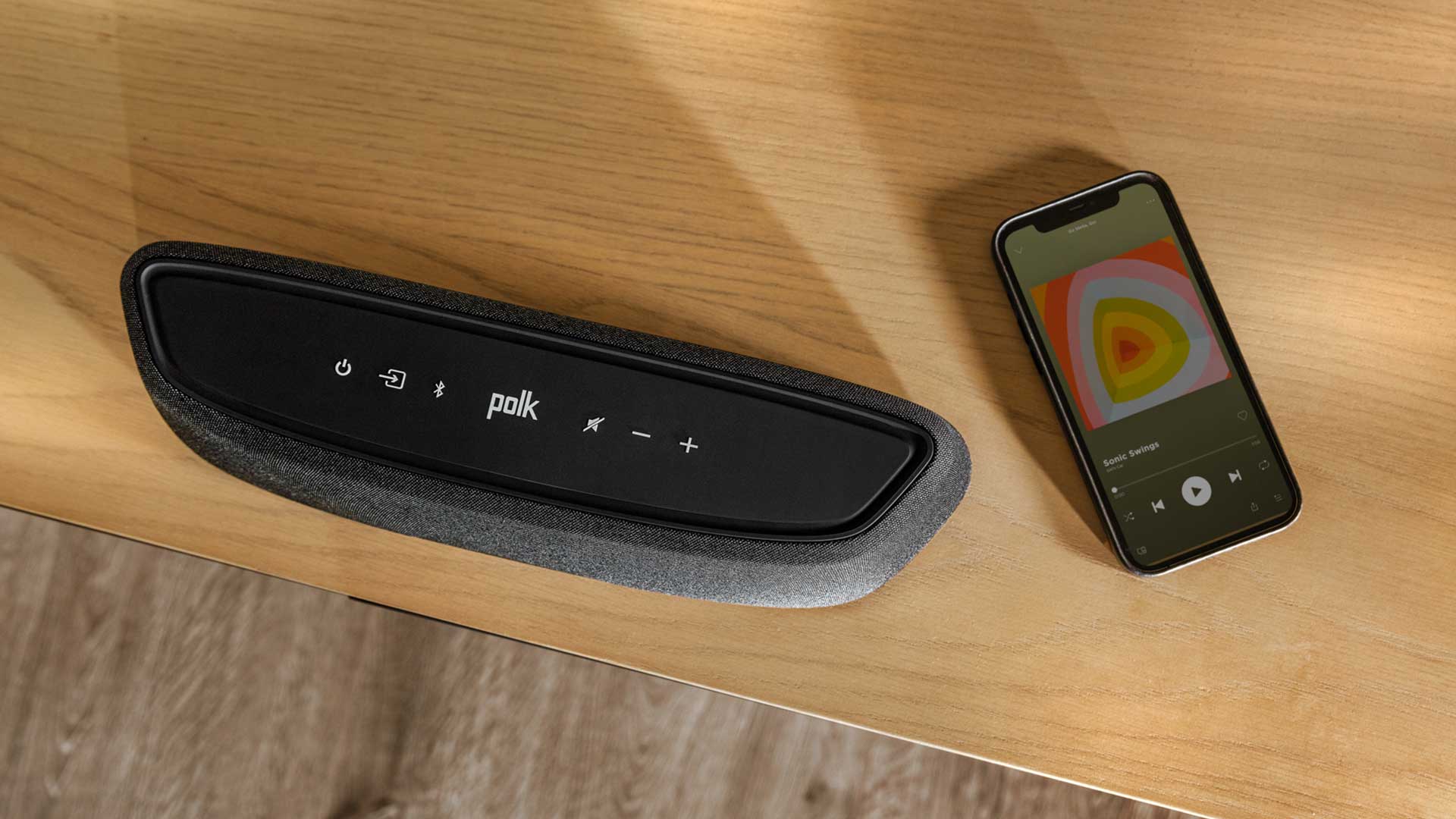
Setting up
If you give the Polk lozenge a compatible HDMI eARC connection, then set-up could hardly be more simple. We gave the lozenge and the subwoofer power, plugged in that HDMI cable – our smart TV recognised that an Atmos-capable ‘receiver’ was attached, and its sound was routed almost immediately through both the lozenge and its wirelessly-connected subwoofer.
There are two ways to connect the main unit to your home Wi-Fi network. Those with Apple devices will find the Polk waiting in the Wi-Fi menus ready to be set up as an AirPlay speaker, while those with Android devices (or Apple, if you like) can use Google Home to bring the Polk into their network of smart products.
We went the AirPlay route, and thereafter the Polk (listed as MagniFi Mini AX-4004) appeared as an output device for playback from our iPhone, iPad or MacBook. There is also Spotify Connect onboard, so you can use the Spotify app on your device to command music that will flow from the internet straight to the Polk, a more efficient and reliable streaming path.
To get non-lossy Dolby Atmos through to the bar, eARC is required, though mere ARC may still manage to pass compressed Atmos. You’ll know because the remote control provided has a useful ‘info’ key at top right; one press invokes the white alphanumeric LED display behind the lozenge’s front grille to display the input, while two presses very usefully shows the file type, whether PCM 2.0 or Dolby Atmos-MAT.
As noted, there are no drivers beyond 3.1 channels here, so any attempt to deliver the immersive surround or height of Dolby Atmos soundtracks can only be done by virtual trickery. That’s not usually our favourite way… but read on.
This unit also decodes DTS:X, the first of our bar group to do so. But as another part of Sound United has pointed out to us, there is no DTS available on any major streaming service pretty much anyway in the world, and even if you were to play a DTS:X disc from a disc player into your TV, the TV will be highly unlikely to pass DTS:X via HDMI eARC either. So the DTS licence here is a redundant inclusion on which Polk could have saved a few dollars per unit.

The remote control is a welcome inclusion; even high-end bars like the Devialet Dione and Bowers & Wilkins Panorama 3 (from a sister brand to Polk under Sound United) come without one, excusing themselves on the grounds that your TV remote will work via HDMI CEC, or learning IR codes from any remote, or using the app, or even Alexa voice commands! The Polk has similar tricks, with remote learning and HDMI CEC, but you get a remote control here anyway, and we were very glad of it. There’s source switching from TV (HDMI or optical) to Aux (analogue) or Bluetooth. And there’s that useful information button.
And there are volume controls – lots of them, indeed. One pair of buttons for the main volume. A second pair labelled ‘Voice’ to individually adjust the centre channel (presumably the function inspiring a mysterious bottom section to the lozenge engraved with the words “Voice Adjust”; we have no idea why else it’s there).
A third pair of buttons adjust ‘bass’, which we gather is not a simple subwoofer level adjustment; it’s intelligently implemented so that the balance in the lozenge is also tilted to match the new bass level.
There’s even a fourth set of volume controls labelled ‘surround’. These allow control of a pair of wireless rear speakers that are available as an upgrade option; we didn’t have access to these during our review.
Which is a shame, as we’d like to hear how much better this MagniFi Mini AX could sound with that additional rear delivery. And that’s because the delivery from just the lozenge and subwoofer alone was pretty darned extraordinary.
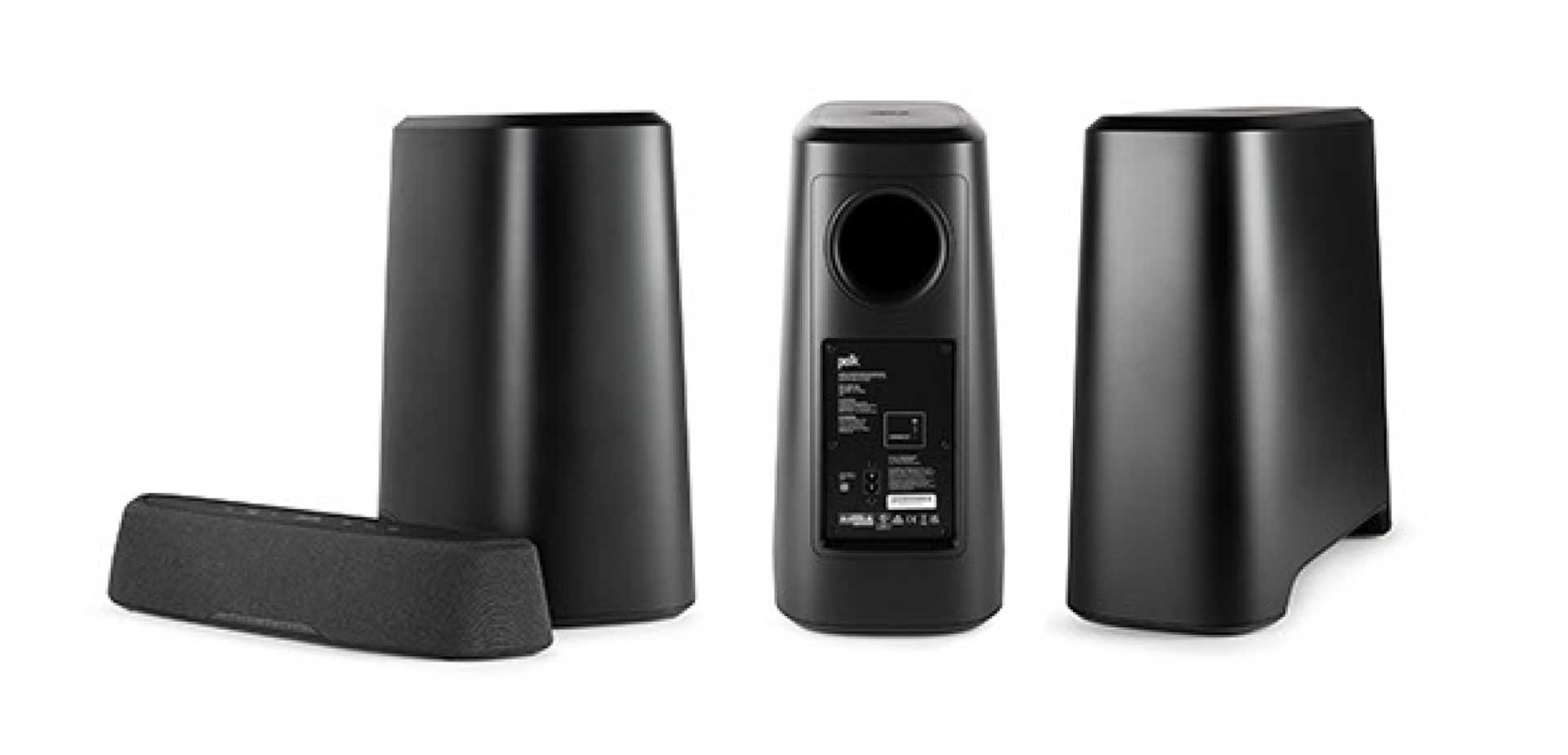
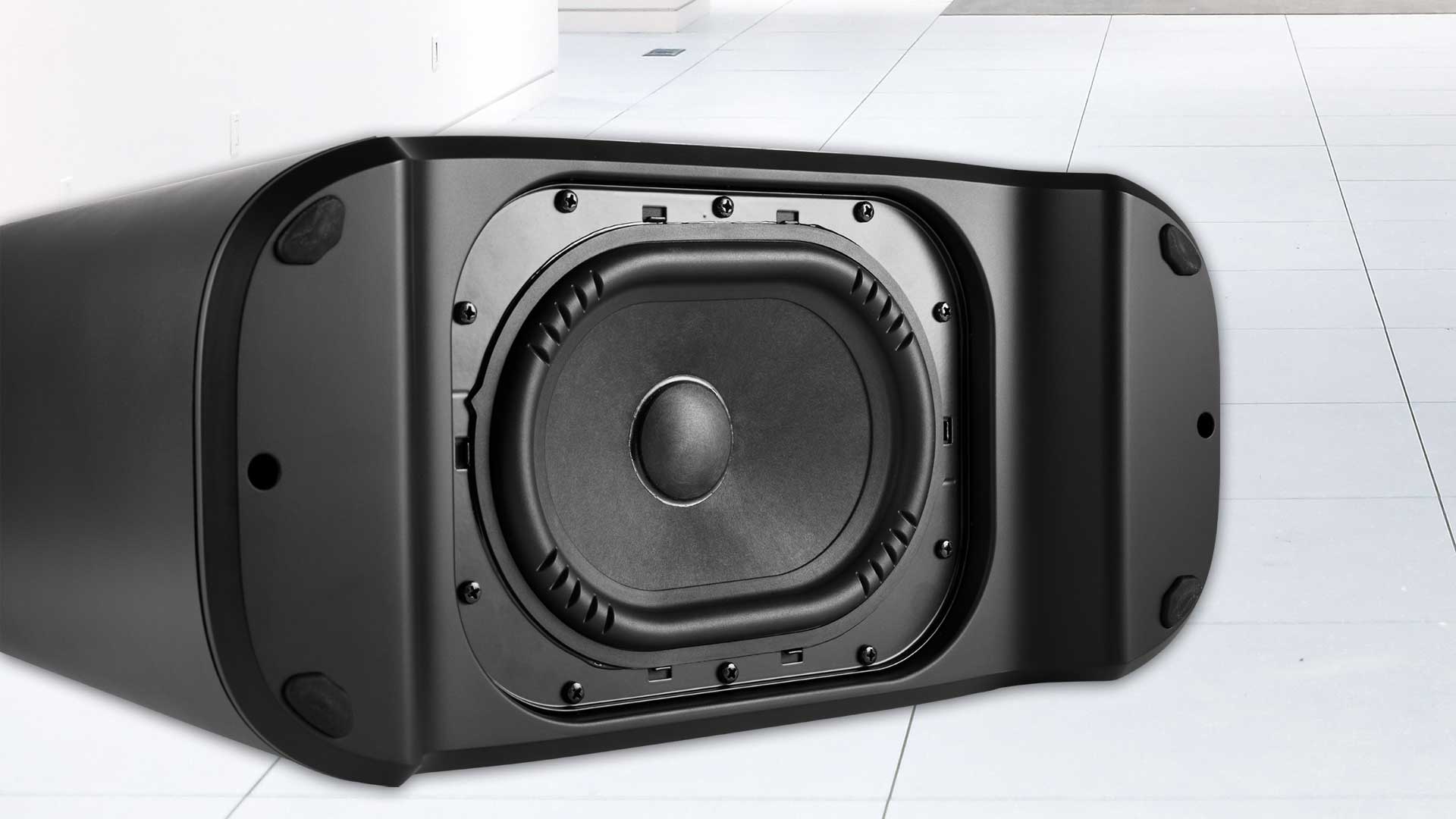
Sound performance
We’d usually engage a full surround system to enjoy a Marvel movie, but we gave Guardians Of the Galaxy Vol. 2 a full run through the Polk system, and the size of sound delivered was wildly impressive. Polk’s tall subwoofer is a movie monster; it shifts enough air to genuinely excite the room, and achieves weighty explosions and punchy powerful gunfire. We were down peering at the back of the sub when one particularly impactful round of gunfire sent a waft of air from the port so substantial that it blew back our hair. This is a sub that can make itself felt!
All the more remarkable, then, how well it integrates with the little lozenge. We’d predict a hole between them as the sound crosses over, but you can’t hear it when listening to movies, or even music-heavy TV. Even a tone sweep moves cleanly from the subwoofer across to the lozenge without revealing any major holes or peaks.
That’s great for an even frequency response, but the Polk pair also do some spatial magic too. Whatever cunning processing Polk is relying on here, it does a remarkable job of expanding the soundfield without destroying vocal intelligibility. We had the volume up loud for the Sex Pistol’s first try-out performance in Pistol on Disney+ (which is in 5.1, not Atmos) and at the moment Jones has a nervous meltdown the swirling soundtrack was pushed up high and wide in an airy and expansive soundfield.
And there were oodles of underlying ominous bass through the close of Pistol episode 2 as well, pulling slightly to the subwoofer’s position (bass is not entirely non-directional) but the clean crossover to the lozenge meant that the combination certainly delivered the impression of something far larger than Polk’s physical solution. The show’s gunshot jingle arrived with marvellously massive slam through the system.
It reminded us of a line in the Polk’s website blurb where it says “Guests will ask, ‘where are all the speakers?’” They may indeed.
Polk highlights its SDA technology as a key to its success. SDA is said to target inter-aural crosstalk, where sound from the right speaker reaches your left ear and vice versa. The solution has been used in Polk speakers for more than 30 years, by “positioning additional drivers to deliver a precisely derived cancellation signal to your ears”, although given the minimal driver count here, it may equally be achieved by this “4th generation of soundbar SDA” by including a polarity-reversed signal to each channel to cancel the expected crosstalk element from the other. The goal is to improve stereo imaging by removing the dilution of crosstalk. If that’s the secret to the sound here, then it’s a big thumbs-up from us.

Just in case four sets of volume controls aren’t enough for you, the Polk also has sound ‘modes’, but they’re not so numerous as to confuse, and serve a genuine purpose.
You use ‘Movie’ for most movie and TV fare, and you can hit ‘3D’ to jazz up any stereo drama at the expense of some clarity.
There’s a ‘night’ option which tames the subwoofer to save the neighbours, and finally a ‘Music’ option which presumably minimises processing, though it still uses the middle driver, and the manual describes it as “for enhancing musical content in TV shows and movies”. Anyway, this mode seemed to select itself by default when streaming music, as ‘Movie’ and ‘3D’ seemed to do with surround/stereo from the TV input, so you won’t spend time getting lost in the sound modes, as can happen on some rival bars.
And as a not-insignificant final bonus, the MagniFi Mini AX proves a very good soundbar/lozenge for music listening. A great deal of music sounded highly enjoyable, the bass continuing to be a strength here as well, and the system could be taken really quite loud without the usual musical distress that soundbars get into. We found it tempting to notch up the bass one or two points with those extra volume controls on the remote control, but that could cause some material to become overwhelming: the underlying bass content of RedBone’s The Witch Queen of New Orleans (streaming via AirPlay from Apple Music) was overcome by a weird swampiness in the lower ranges until we returned the bass to its neutral position.
But on the whole, it’s another thumbs-up for the Polk combo with music. Of course a proper hi-fi with stereo speakers will have many sonic advantages, but for a soundbar, particularly one at this price which also does movies well, this is a good performance.
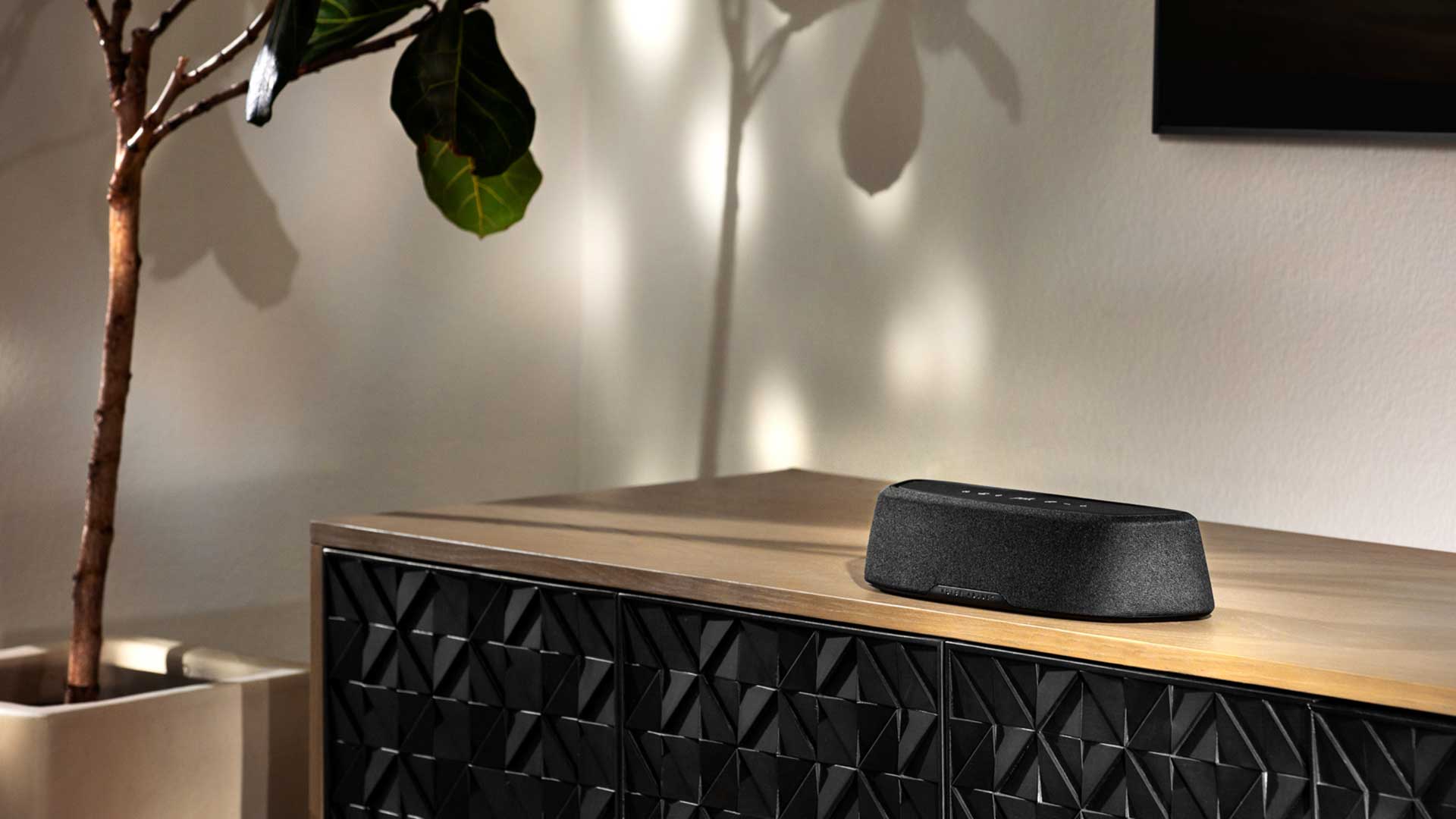
Verdict
It’s pleasing to see a significantly different solution from one of Sound United’s brands; we’ve noted recently one Polk soundbar which shares nearly all attributes except an HDMI input with a near-identical bar from stablemate Denon, and such shared solutions do little to encourage interest in and loyalty to a particular brand.
But the MagniFi Mini AX proves to be pure Polk, and its outlying approach to music, TV and movie sound took us by surprise, not least with the success it achieved across all manner of genres, musical and cinematic. This lozenge is physically discreet, while the system delivers a solid entertainment performance for those seeking a simple solution at this price, and we're not at all surprised to see it further recognised by a gong in the 2022/2023 EISA Awards.

Jez is the Editor of Sound+Image magazine, having inhabited that role since 2006, more or less a lustrum after departing his UK homeland to adopt an additional nationality under the more favourable climes and skies of Australia. Prior to his desertion he was Editor of the UK's Stuff magazine, and before that Editor of What Hi-Fi? magazine, and before that of the erstwhile Audiophile magazine and of Electronics Today International. He makes music as well as enjoying it, is alarmingly wedded to the notion that Led Zeppelin remains the highest point of rock'n'roll yet attained, though remains willing to assess modern pretenders. He lives in a modest shack on Sydney's Northern Beaches with his Canadian wife Deanna, a rescue greyhound called Jewels, and an assortment of changing wildlife under care. If you're seeking his articles by clicking this profile, you'll see far more of them by switching to the Australian version of WHF.
